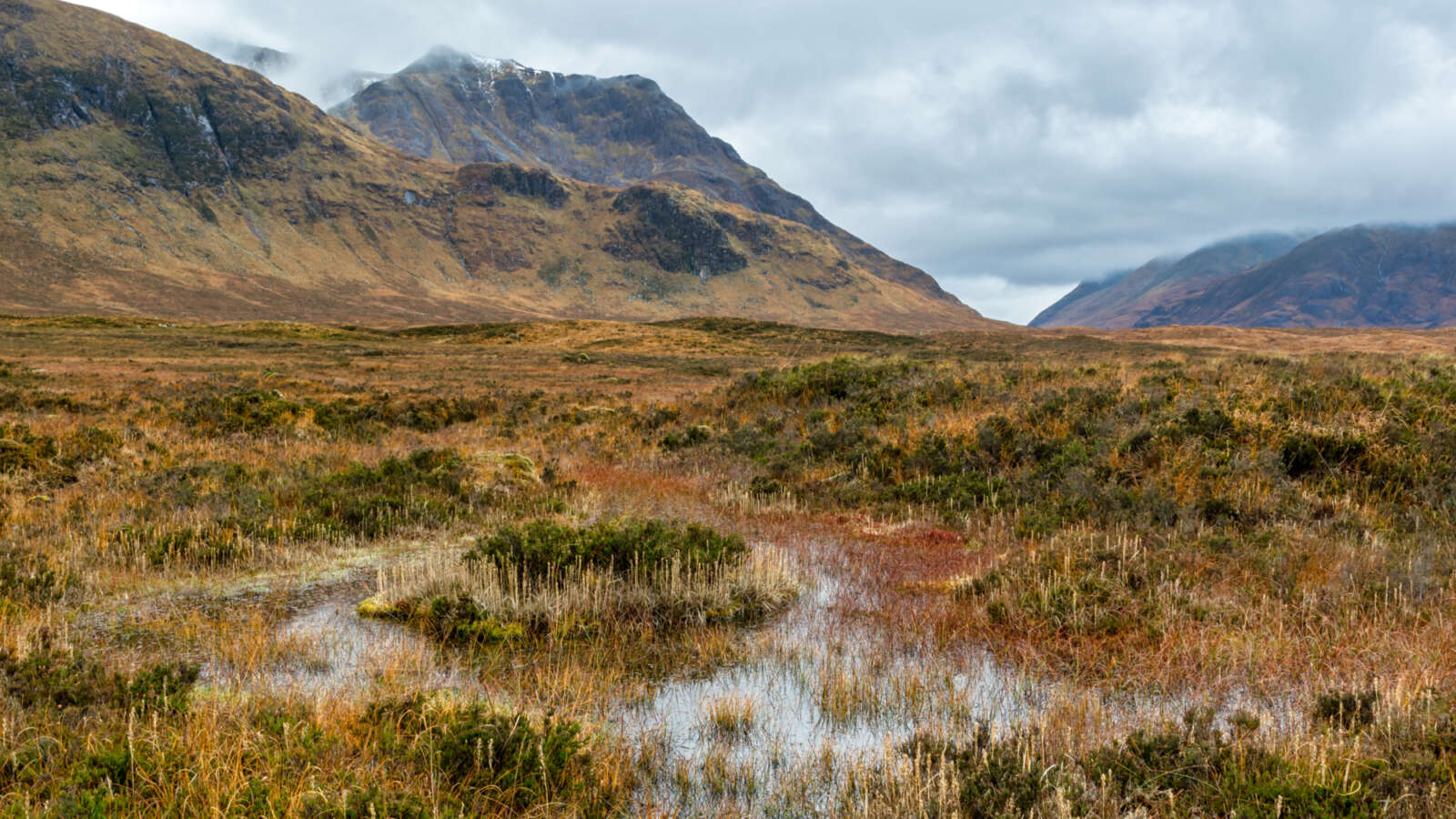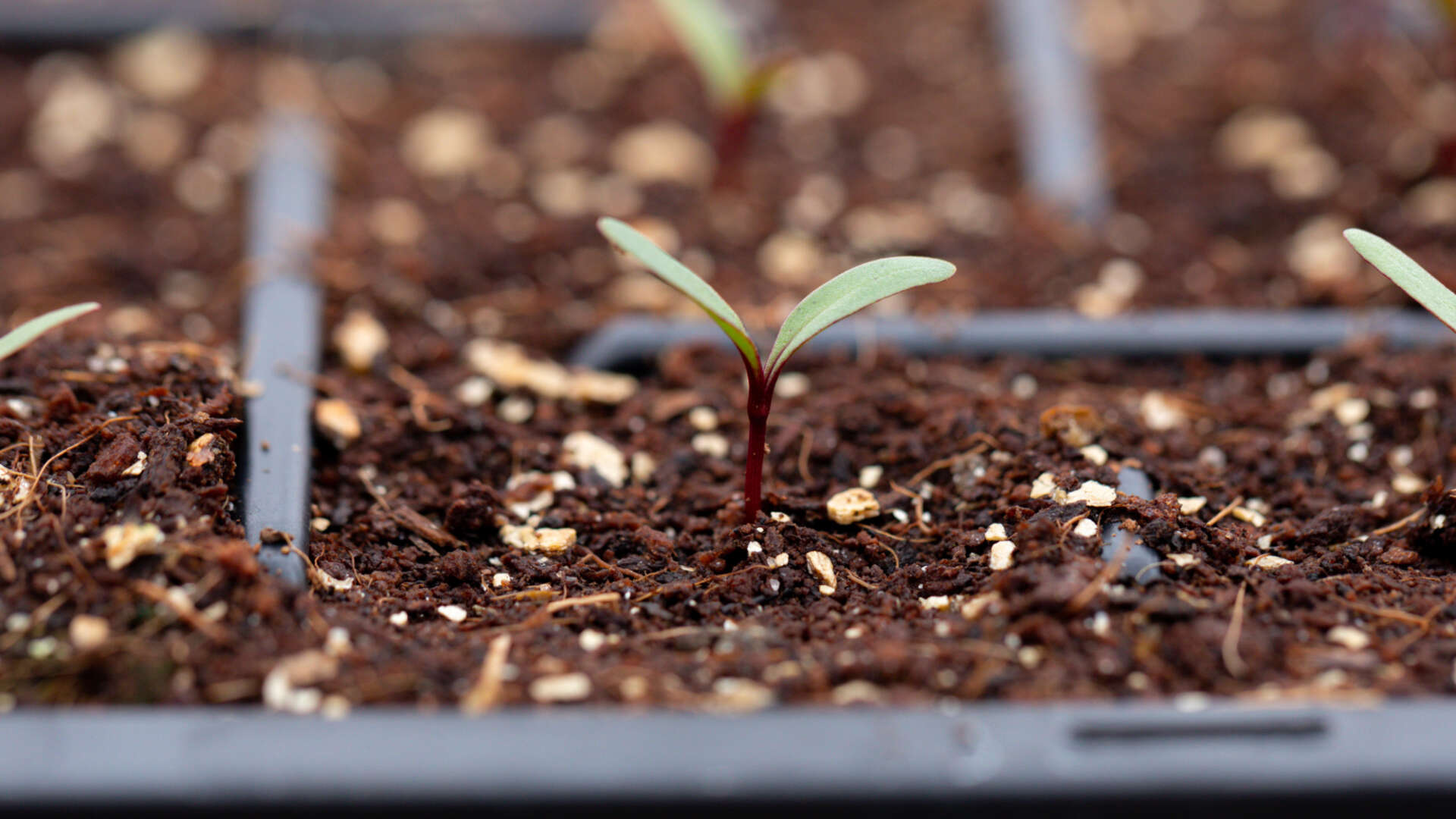
Peat-free growing
It's not difficult, we've got all the advice you might need for successful peat-free growing, including:
- How to make your own homemade potting compost
- Buying peat-free bags
- Tips on peat-free growing
- What is peat and why we shouldn't use it?
Free support with peat-free growing
Before you delve into the information below, you may want to take a look at our free peat-free growing online self-guided course.
Simply follow our step-by-step course of videos, information, and short quizzes. If you’re pushed for time you can stop the training at any point and pick up where you left off.

How to make your own potting compost
Sowing seeds
Seeds contain their own nutrients so they will germinate successfully in low nutrient material, with good drainage.
- Recommended mix: 1 part loam (garden soil), 1 part leafmould
- Make sure the two are well seived (no big lumps), firmed down, and the mix is kept moist.
Potting on
Seedlings and young plants need excellent drainage and a little more nutrient (not too much, or they become leggy without finding their own strength).
- Recommended mix: 1 part loam (garden soil), 1 part leafmould, 1 part sieved garden compost.
- Adding the seived garden compost provides that vital, slow-release fertiliser
Cuttings
These need excellent drainage (so their ends don’t rot) and fine-textured medium (to help the roots establish).
- Recommended mix: Half sharp sand and half home compost (or purchased peat-free growing medium such as coir).
- Insert cuttings gently into holes already made in the mix, and firm gently around them. Keep the mix moist. Top with grit to prevent moisture loss.
Planting herbs
Sage, thyme, basil and marjoram all need well-drained soil. It is the wet, not the cold, that will kill their roots.
- Recommended mix: 1 part loam (garden soil), 1 part home compost, 1 part sharp sand.
- This is the perfect recipe for those Mediterranean herbs
Large containers
Plants growing for a long time in pots need a good source of slow-release nutrients throughout the growing seasons.
- Recommended mix: Equal parts loam and homemade compost. If your loam is rich enough, you can scale back to a smaller amount of compost, added fresh each year.
- It is good to feed the plant at certain times, such as blooming and fruiting. Try making your own comfrey liquid fertiliser.
The ideal growing medium for containers should:
- Provide the correct nutrients for the plant.
- Retain moisture, but drain well.
- Retain air, yet hold plant roots firmly.
- Be uniform in consistency, eg no large lumps, etc.
- Be free from pests, diseases and weed seeds.
It should not:
- Reduce volume, leaving pots, trays, and containers half empty.
- 'Slump’, becoming compact and airless.
- Become drained of nutrients very quickly or be too rich for young seedlings

Buying peat-free bags
Be sure to get the right mix for the right stage in your plant’s life. Seed sowing, potting on, cuttings etc. There are also mixes for ericaceous and other acid-loving plants.
Peat-free compost can be a little more expensive. It’s worth it. And it’s worth spending more within the peat-free range itself. Cheap peat-free will almost certainly disappoint.
Garden Organic recommends producers that only make peat-free mixes, such as Melcourt (Sylvagrow range), Dalefoot (Lakeland Gold) and Fertile Fibre
Read the label carefully. Beware those which say ‘Reduced peat’ - these can still hold up to 80% peat in the mix. Ignore claims of ‘not from an environmentally sensitive site’ – all peat bogs are sensitive habitats. And ‘organic’ doesn’t necessarily mean peat-free.
Tips on peat-free growing
New peat-free composts perform excellently. But you might notice they have a different texture, which requires a slight change in watering habits.
Watering
Because of their high coir and woodchip content, peat-free mixes have a tendency to dry out more easily. They also have a coarse texture, which can appear dry on the surface but still damp further down.
Check by putting your finger in the soil to see if it’s dry all the way through.
Watering little and often is best.
Don’t let them dry out otherwise they can be difficult to water again, as the water runs off the top. If this does happen, soak the whole pot in a bucket of water to let it draw up the moisture.
Feeding
All bagged composts have CRFs (controlled release fertilisers) included which will feed the plant over a period of just a few weeks. Peat-based composts claim to feed for up to 6 weeks, while most peat-free composts provide fertiliser up to 4 weeks.
If you observe your plants on a regular basis you will know if they need extra feeding. Use liquid feeds, such as homemade comfrey tea (see Comfrey). With more mature plants, we recommend adding some homemade compost into the mix. It helps with structure and provides slow-release nutrients over a period of months.
What is peat and why shouldn't we use it?
It is a type of soil made up of waterlogged, partially-decomposed plant material (including sphagnum moss and other acid-loving plants), which has built up over nearly 10,000 years in wetland habitats. See here for more information on this valuable ecosystem.
More than 95% of lowland bogs in the UK have been destroyed or damaged, in order to gather peat on a large industrial scale. This totally destroys vast habitats which support many rare and endangered species of plants and wildlife. They cannot be regenerated - they are gone forever. (It takes a year to create just 1mm of peat.) Peat is also the largest and most efficient land-based store of carbon, one of the planet’s damaging greenhouse gases. Peat bogs store on average 10 times more carbon per hectare than any other ecosystem, including forests. Garden plants don't actually need peat, whereas bog plants growing in the wild do.